Cast iron cookware is one of our top choices at LeafScore. We tested Lancaster Cast Iron and offer our thoughts below for pros and cons, plus whether it’s worth the extra money over the much more affordable Lodge cast iron cookware line.
Our Review
We’re all looking for that elusive trifecta regarding cookware: safe to use, sustainable components, and from the “states” (made in America). Many brands can satisfy two out of the three, but few fulfill every category.
Enter Lancaster Cast Iron. Though a newcomer to the cooking space, Lancaster is making a name for itself among novices and serious cooks alike. It boasts lightweight, pre-seasoned pans 100% made in America.
Do these skillets live up to their reputation? Are you better off buying from a different brand? When I was given the opportunity to test out a Lancaster Cast Iron skillet, I set out to answer these questions.
Here are my takeaways.
- Vintage-inspired design with modern durability
- Ultra lightweight
- Works on essentially every cooking surface
- Extremely smooth interior
- Comes pre-seasoned and with additional seasoning treatment
- Ready to work right out of the box
- Numerous accessories, including durable leather handles for heat protection
- Made in Pennsylvania
- Emblem on bottom of pan looks nice when displayed in a kitchen
- Thinner frame means the pan won’t retain heat as well as some cast iron competitors
- No upper handle (could get unwieldy at larger sizes)
- More expensive than alternatives like Lodge
- Relatively limited number of products/sizes
About Lancaster
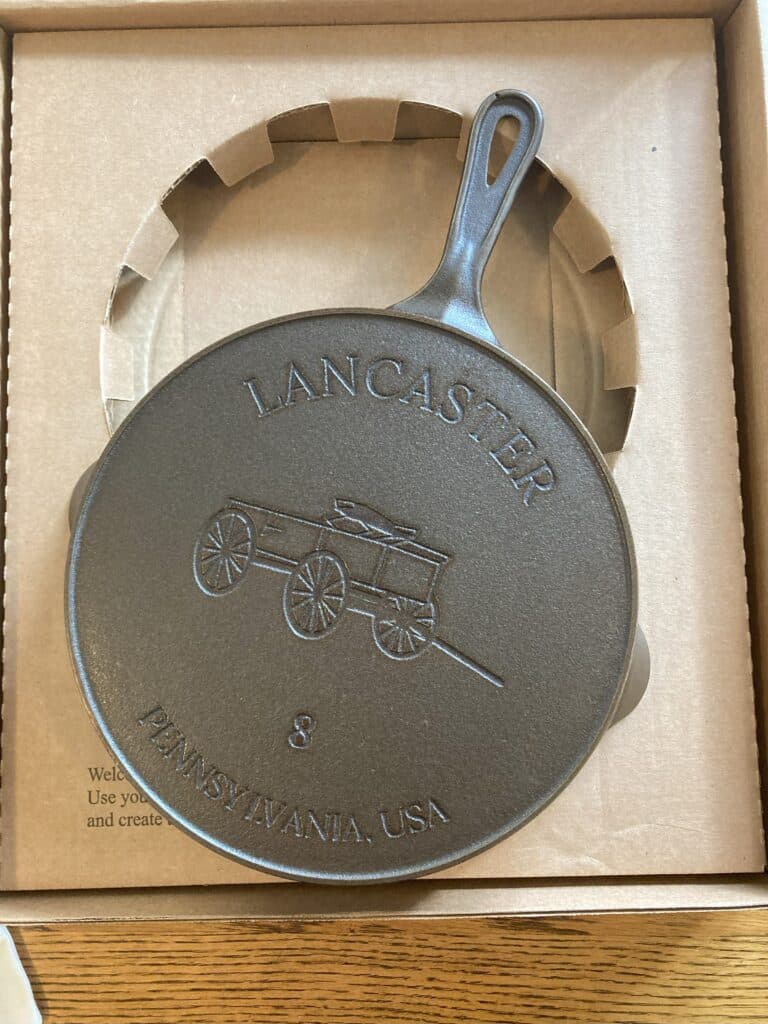
Lancaster Cast Iron began in 2018 when cofounders Mark Longenecker and Brandon Moore went on a transcontinental trip that inspired them to rethink their priorities and help others find ways to slow down and enjoy the process of eating good food with loved ones.
Mark grew up cooking on antique cast iron skillets that were smoother and more lightweight than modern options. He wanted to bring that premium cooking experience to the greater world while paying homage to Pennsylvania’s long history as a leader in cast iron design and development.
The pair spent a year visiting foundries and machine shops to learn what it would take to create a new brand of cast iron cookware. They began the business out of a house with a machine shop attached. Since then, they’ve expanded to a historic schoolhouse in Conestoga that offers ten times the space of the original shop.
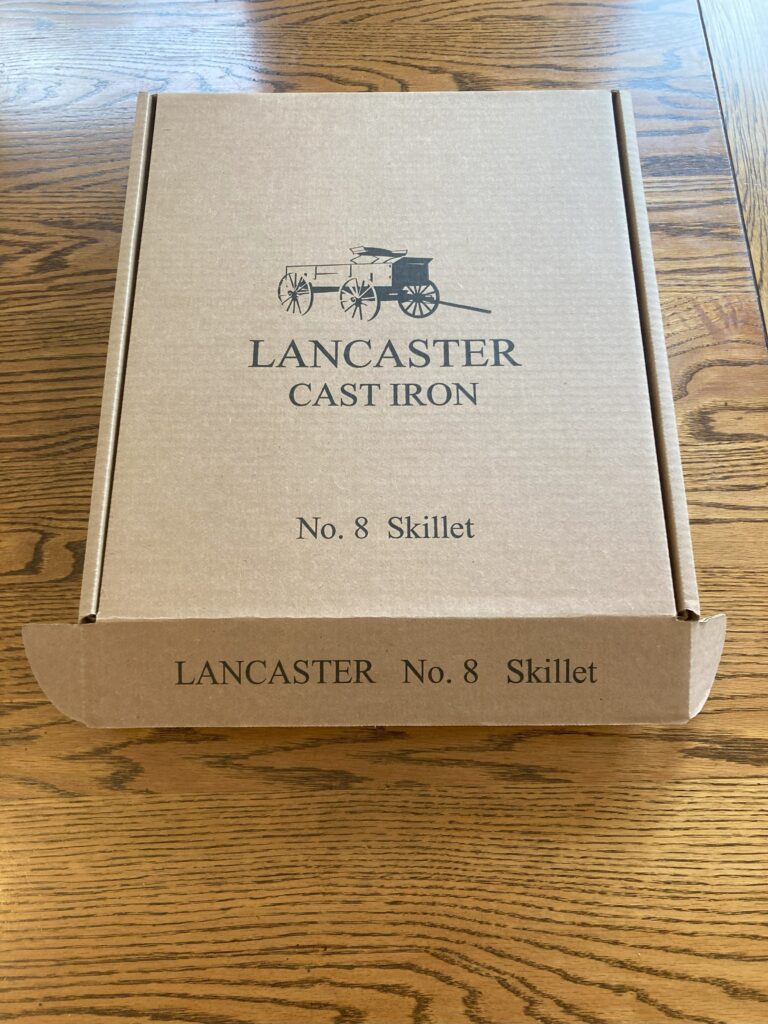
Today, each new product is fine-tuned at the desing stage for weeks before the match plate is made for casting each skillet. Each pan is made individually through a traditional sand casting method. The pans undergo an eight-step process that includes receiving two coats of seasoning to ensure they are ready to use immediately.
Lancaster Cast Iron stands out for its smooth finish and lightweight design. Longenecker and Moore wanted to emulate the design tricks of vintage masters like Griswold that created durable nonstick cookware before Teflon became commonplace.
What we love
Premium cookware is a crowded field. How is Lancaster Cast Iron differentiating itself?
- Smooth, durable, and light for easy handling on any cooking surface
- Every pan is poured, finished, and seasoned by hand in the Pennsylvania factory
- Large, vintage-inspired pour spouts make it simple to drain liquids and plate pan sauces
- Smooth-finished interior for a nonstick cooking surface
- Thin walls let the pan heat to cooking temperature quickly
- High heat retention that reduces temperature spikes when cooking
- The pan improves with age as the seasoning builds up
- Cast iron is 100% natural and recyclable
- Weighs just 4.5 lbs
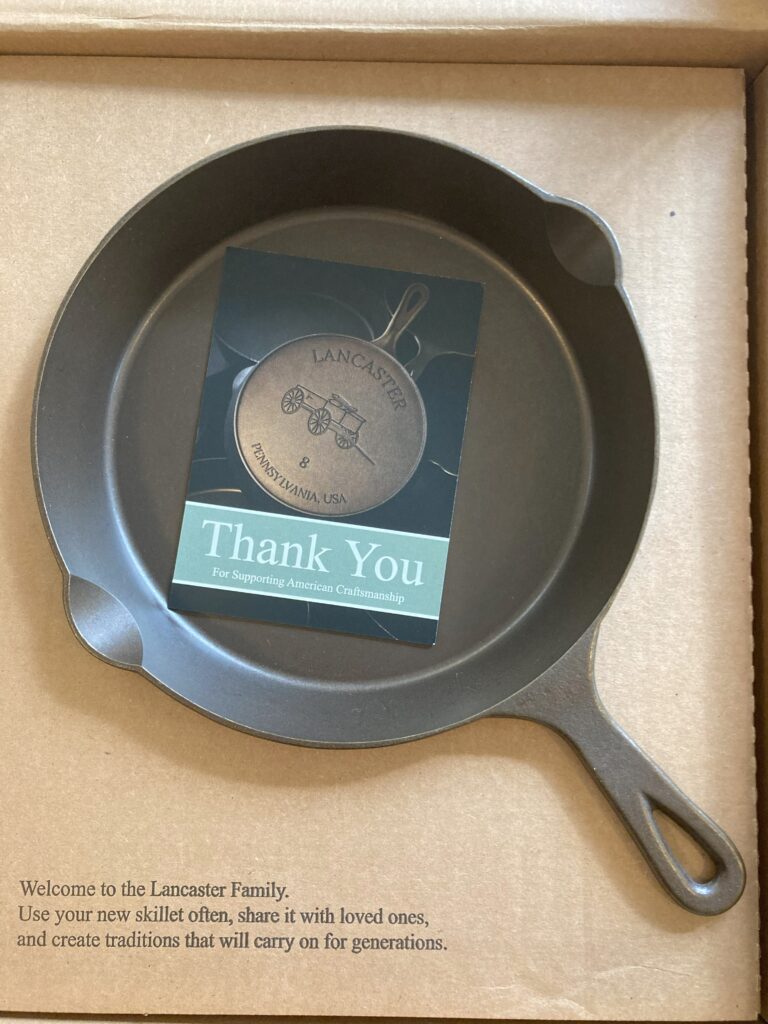
Product Options
To date, Lancaster Cast Iron sells three skillets: the No. 8, No. 10, and No. 12, with more sizes coming soon. Each is named within the traditional American cast iron sizing metrics from the 1800s. The numbers don’t correlate to how many inches wide they are, but rather the size of the eyes on antique wood stoves. The No. 8, for instance, is a top diameter 10.5” skillet.
The pans are currently priced as follows:
- No. 8: $175
- No. 10: $225
- No. 12: $275
Accessories are available, including leather handle covers for $29.
Each pan has a 30-day return policy (minus return shipping) and a lifetime warranty against defects.
You can also purchase the skillets in person within the schoolhouse-turned-production space.
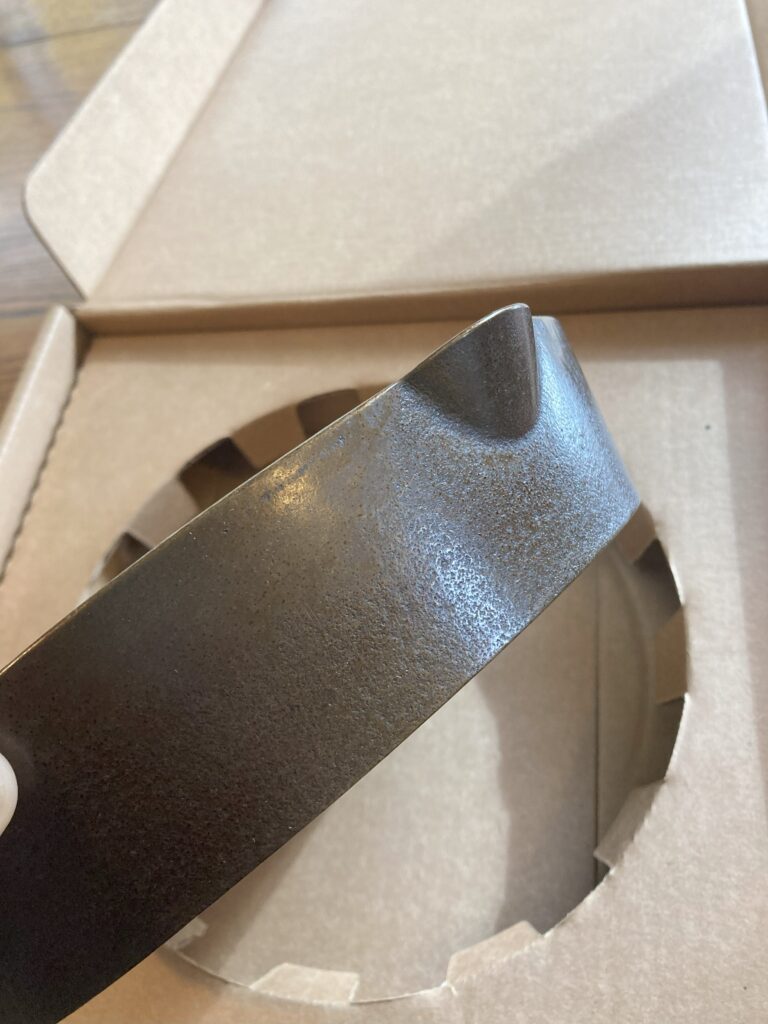
Our Experience
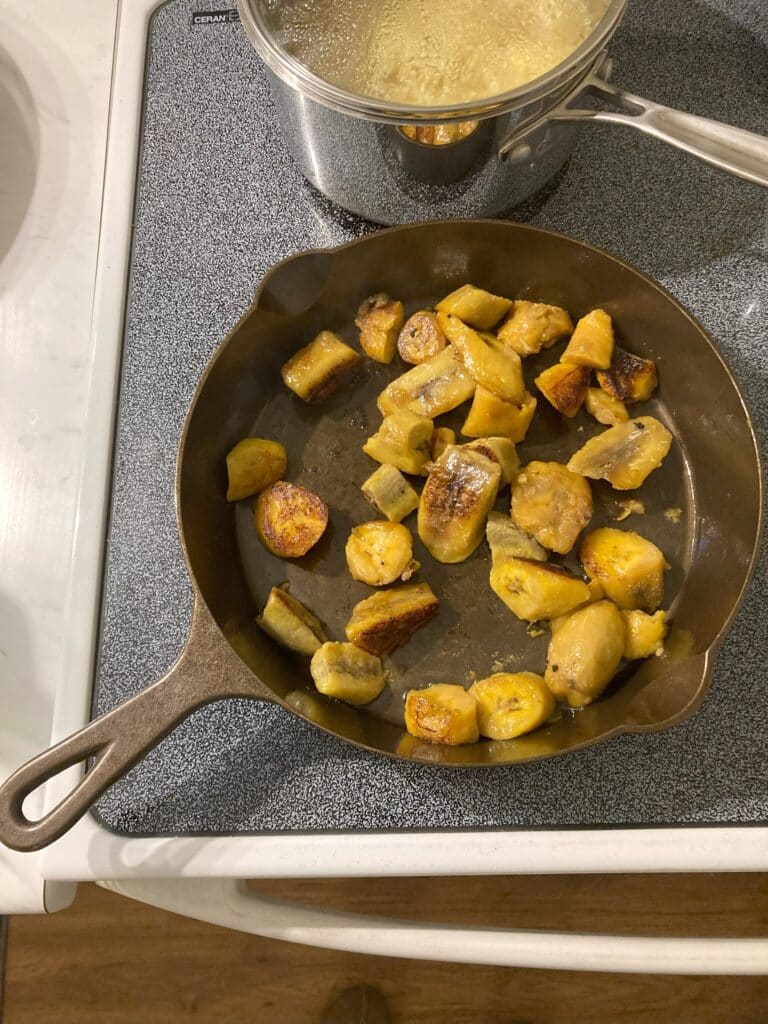
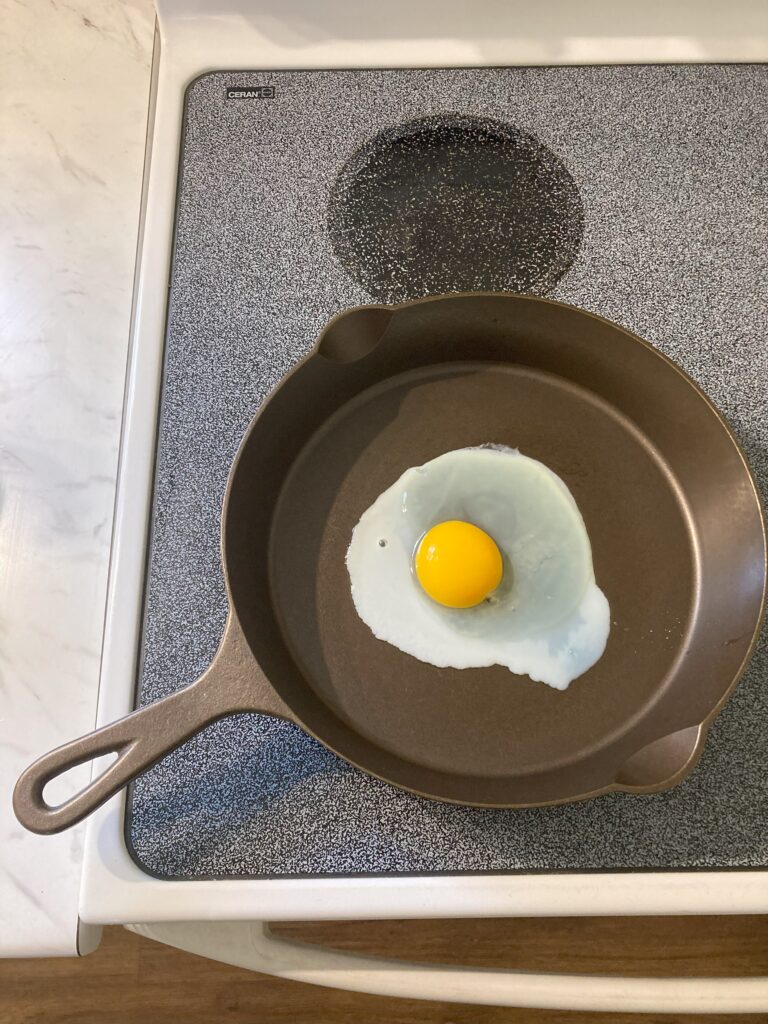
I received the No. 8 skillet. First impressions couldn’t be more positive. The skillet comes in a 100% cardboard box (hooray for recycling!) that is well-designed with an aura of elegance. The carriage in the logo belies the fact that this brand is only five years old. Instead, you feel like you’re purchasing part of Americana.
You feel like you’re purchasing part of Americana.
Upon opening, the skillet is shiny and even-colored. Every prediction on the company website proved correct—my first thought upon pulling it out of the packaging was, “wow, this skillet is really light!” There’s a notable weight difference compared to the Lodge cast iron we typically use. The Lancaster has a vintage-inspired design, with a flat pan bottom and walls that go straight up rather than angled out.
First-use instructions are included with the packaging. That’s a good thing, as cast iron can be intimidating. But really, they primarily act as a reassurance not to be afraid. Each skillet has been twice-seasoned before being available for sale, so there’s nothing to stop you from diving in on dinner.
I eschewed the brand’s instructions to start with vegetables and instead fried an egg. A few sprays of oil, and I put the pan on medium heat. It heated quickly, which I learned the hard way by grabbing its handle. Oops. The leather heat protector may be well worth the purchase.
My egg cooked beautifully in the Lancaster; no sticking whatsoever. This can be a challenge with my other cookware, so I came away impressed. But how well would it sear fish? I next tested its capabilities for high-heat cooking with some ahi tuna.
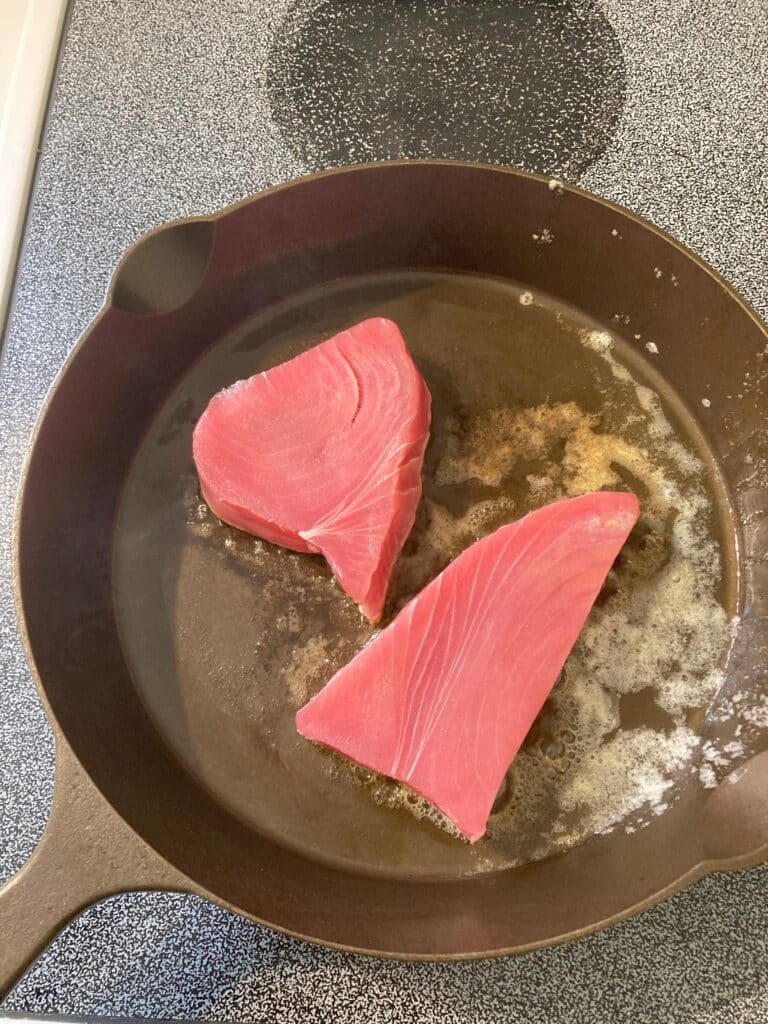
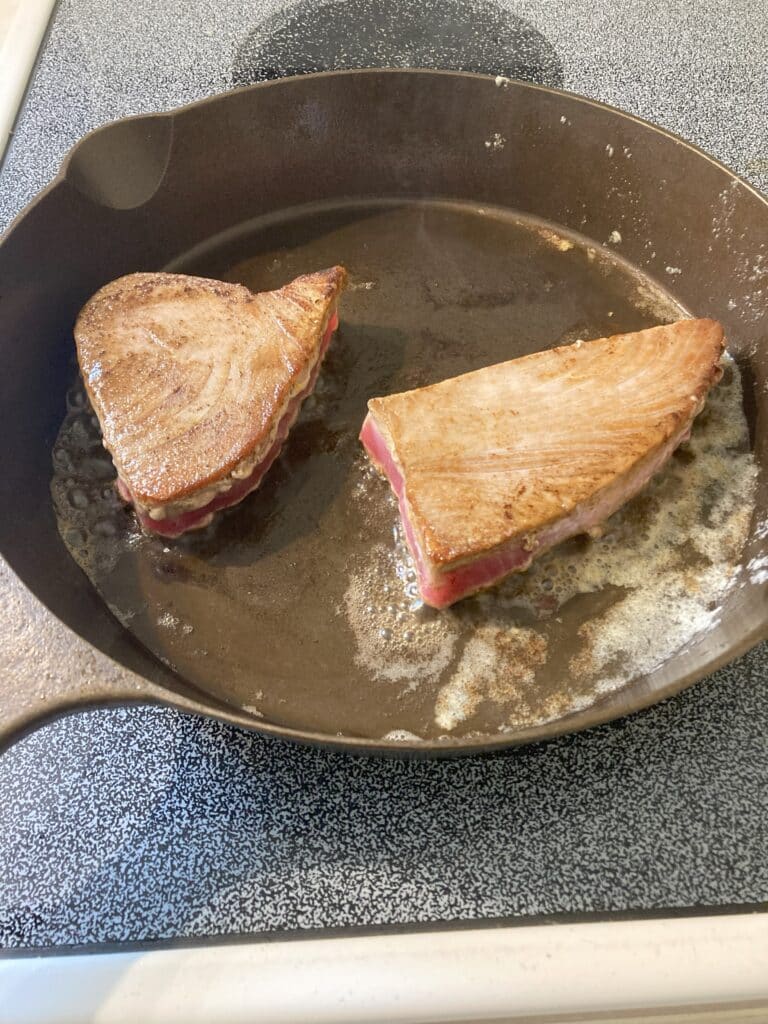
The first step was browning butter. Perhaps that’s cheating for not fully testing the skillet’s nonstick properties, but I wasn’t about to make fish sans butter. I cranked the stove to medium-high and seared each side of the fish for two minutes. It came away golden brown with slightly crispy edges and a bright pink center, perfectly done. The leftover butter was easy to discard by pouring it from the generously sized pour spout. And unlike my other pans, the Lancaster was lightweight enough that I could do this one-handed.
Though the pan impressed me so far, I wanted to put it up against a harder test by using it to brown sticky, mushy plantains. The key to a good plantain is a caramelized exterior, but I’m often left scraping said exterior off the bottom of my cookware when the pieces stick to the pan and then burn in place.
Not so with Lancaster! I experienced only the mildest of sticking, and the plantains caramelized beautifully. My one mistake was forgetting how well the pan retained heat. I left it on the hot burner after turning it off and came back to find the bottom layer slightly burned. But still, no sticking to speak of.
I’ve used the skillet for several other meals, taking care to follow the company’s maintenance instructions for cleaning it after use. This mostly involves wiping out the interior and using small amounts of water (no soap) if it seems to need extra attention. So far, the seasoning looks pristine, and the skillet remains as nonstick as my first use. I’ve come away impressed.
The bottom line
Is this skillet an upgrade from my previous cast iron cookware? Undoubtedly.
I can appreciate the smooth interior, its balanced feel in my hand, and the delicious results from using it. But this skillet is $175, and my Lodge cast iron was about $20. Both are made in America. Is the Lancaster worth over $150 more? That’s a personal decision that comes down to how often you cook and what you value in a skillet.
It’s priced more reasonably than other premium cast iron brands, including Butter Pat and Yeti.
Here’s my verdict—anyone looking for a premium cooking experience with a skillet that should last for decades would do themselves a disservice not to consider Lancaster Cast Iron. While we love Lodge cast iron at LeafScore, the Lancaster products feel more like a family heirloom.
Now, if you’ll excuse me, I’m off to bake some cornbread.
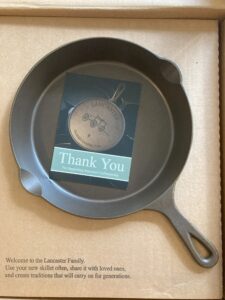
Lancaster Cast Iron Cookware [Staff Tested]
Highlights: Durable, smooth, and light iron cookware, the No. 8 skillet weighs just 4.5lbs. This cast iron gives you more temperature control while holding optimal heat.
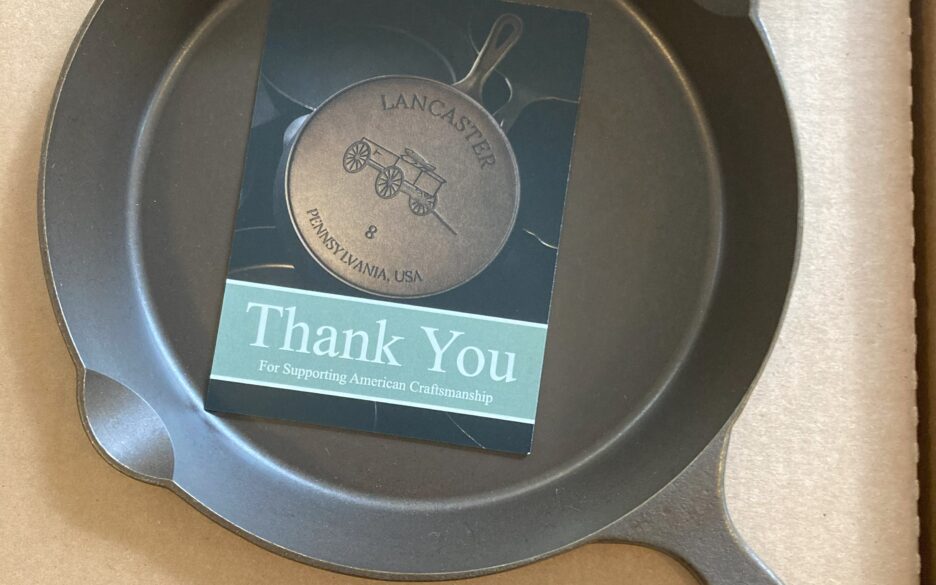
I bought one because it is Made I the USA. I love it. I also have many pieces of Griswold and other fine cast iron cookware, and Lancaster is on par with them. Well worth the price.